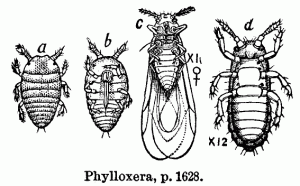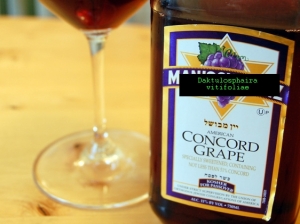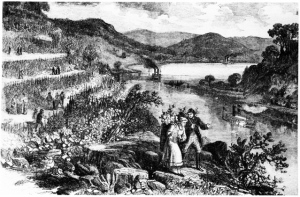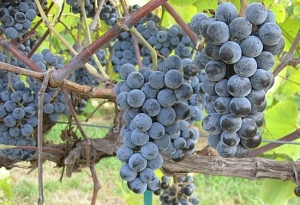Let’s lay our cards on the table from the start:
I’m zowie about Zinfandel. I dig the rich, meaty Ravenswood lineup whose bar Joel Peterson has raised so high that to leap over it, you’d have to be fitted with bionic limbs. I go nuts for the subtle majesty of Randle Johnson’s portfolio, where he works with multiple growers to produce Zinfandels that showcase the fruit, the fluff and the finesse. I’m enamored with the deep, dry Zins of Dry Creek, of Paso Robles, of the Mayacamas Mountains and Napa Valley. I’ve had a single vineyard Russian River méthode champenoise Zinfandel from Harvest Moon that sparkles like the stars in that same sultry autumn sky.
And—so that you can get head start on the fires you’ll need when you burn me at the stake—I happen to love the head-trained, dry-farmed Estate White Zinfandel made by Tegan Passalacqua of Turley Wine Cellars, which is as far from your grandmother’s bottle of Beringer as Thunderbird is from Soaring Eagle.
That Said…
I love Zinfandel, but what I love less is the marketing declaration that Zinfandel is ‘America’s Grape’. I understand what they mean, of course, and I’ve used that tagline myself. The United States has been producing Zinfandel longer and better than any other wine locale on the globe—it proved an ideal grape for the climate and soil of California, far happier in the hot, dryish Left Coast terroir than the one offered by its motherland, Croatia. In fact, when it was first planted a decade before the Civil War and a couple of years after the Golden territory became a Golden State, it was understood to produce not only outstanding wine but luscious, much-coveted raisins.
I mention Croatia and the marketing hook ‘America’s Grape’ because both become indispensible components in what follows. Before DNA fingerprinting became a tool for enologists as well as forensic detectives, Zinfandel’s origins were pretty much a mystery. For all of the 19th century and most of the 20th, it was not known that Zinfandel might have its genuine roots many miles away and many centuries removed from those early California plantings.
 Certainly, at the time, nobody else was growing a grape they called Zinfandel, and when it was discovered that the variety is genetically indistinguishable from Croatia’s Crljenak Kaštelanski, the few remaining vineyards where the vines were still planted in Eastern Europe were not producing commercial quantities of wine. The Apuglia variety Primitivo, also an extremely close (perhaps Patty Duke identical) cousin to Zinfandel, is not claimed as a native variety even by Puglians. It too, found its way to the sunny climate of Italy’s boot heel via Croatia.
Certainly, at the time, nobody else was growing a grape they called Zinfandel, and when it was discovered that the variety is genetically indistinguishable from Croatia’s Crljenak Kaštelanski, the few remaining vineyards where the vines were still planted in Eastern Europe were not producing commercial quantities of wine. The Apuglia variety Primitivo, also an extremely close (perhaps Patty Duke identical) cousin to Zinfandel, is not claimed as a native variety even by Puglians. It too, found its way to the sunny climate of Italy’s boot heel via Croatia.
Certainly, the wine we call Zinfandel is, even its many costumes and many guises, so different from Primitivo that U.S. regulations require that Zinfandel and Primitivo be identified separately.
So Begins Yet Another Search for America…
 The search for a real American grape is not difficult; in fact, if it wasn’t for the rootstock of the American vine Vitis labrusca, chances are there would be very little potable wine from Croatia, Puglia or anywhere else other than a few small, isolated pockets of the globe unaffected by the evil little aphid known as phylloxera. The Great French Wine Blight, as it became known (roughly 1866-1888), began around the time that Californians were first beginning to heap laurels upon Zinfandel. Hitchhiking to the United States to Europe via steamships bearing American vines, the blight destroyed more than 40% of French vineyards over a fifteen-year period, and not unlike the Black Plague in the 14th century, pretty much ruined the European’s 19th century wine economy. Daktulosphaira vitifoliae, which is what people who like Latin words call phylloxera, also thumbed its little aphid nose at most pesticides and chemicals then in use.
The search for a real American grape is not difficult; in fact, if it wasn’t for the rootstock of the American vine Vitis labrusca, chances are there would be very little potable wine from Croatia, Puglia or anywhere else other than a few small, isolated pockets of the globe unaffected by the evil little aphid known as phylloxera. The Great French Wine Blight, as it became known (roughly 1866-1888), began around the time that Californians were first beginning to heap laurels upon Zinfandel. Hitchhiking to the United States to Europe via steamships bearing American vines, the blight destroyed more than 40% of French vineyards over a fifteen-year period, and not unlike the Black Plague in the 14th century, pretty much ruined the European’s 19th century wine economy. Daktulosphaira vitifoliae, which is what people who like Latin words call phylloxera, also thumbed its little aphid nose at most pesticides and chemicals then in use.
Phylloxera may have been an unwelcome American import, but it was discovered that Vitis labrusca—the native North American grape species (as opposed to Vitis vinifera, the European equivalent) which includes the varieties Catawba, Concord and Delaware—were genetically resistant to phylloxera, which is why the vines sent to Europe, along with the aphids, were perfectly healthy. So, at the eleventh hour, with wine Armageddon upon us, Missouri’s state entomologist Charles Valentine Riley confirmed a French theory that if you grafted Vitis vinifera—the species that includes Cabernet Sauvignon, Chardonnay, Merlot, Syrah et al.—onto Vitis labrusca rootstock, the entire vine could avoid the appetite of aphids altogether and still produce marvelous, European-style wine.
And that’s how they handled it, thus saving the continent’s wine industry in the purplish equivalent of Hands Across The Water.
Virtually every wine you drink today, no matter its place of origin (other than a few isolated spots in Chile and Greece), has American root stock nestling below the soil.
Labrusca is not Lambrusco: It’s Worse
 The problem with wine made directly from Vitis labrusca, though, is that it sucks. Wines made from Concord—often Kosher wines from a major New York winery whose name I will not give other than to say that it is long as any Latin biological nomenclature and just as hard to spell—usually has so much corn sugar added that it is like drinking soda pop with a shot of vodka, unfit for most discerning wine palates. Without the sweetness, an inherent Vitis labrusca quality known by the silly term ‘foxiness’ is almost overpowering. I call the word ‘silly’ because it is has practically nothing to do with foxes. Rather, it’s a smell that resembles the foul, semi-viscous pheromones that most mammals, including foxes, secrete from glands located near the spot where the moon don’t shine.
The problem with wine made directly from Vitis labrusca, though, is that it sucks. Wines made from Concord—often Kosher wines from a major New York winery whose name I will not give other than to say that it is long as any Latin biological nomenclature and just as hard to spell—usually has so much corn sugar added that it is like drinking soda pop with a shot of vodka, unfit for most discerning wine palates. Without the sweetness, an inherent Vitis labrusca quality known by the silly term ‘foxiness’ is almost overpowering. I call the word ‘silly’ because it is has practically nothing to do with foxes. Rather, it’s a smell that resembles the foul, semi-viscous pheromones that most mammals, including foxes, secrete from glands located near the spot where the moon don’t shine.
And that’s probably overselling it. It’s also called ‘musk’ and you squish some of it out of your armpits whenever you forget the Brut. Get the picture?
So the search for a real good American wine grape? That’s as difficult as finding a tan at an albino convention.
There is, however, another species of native North American grape called Vitis aestivalis. It began as a wild vine growing in the Eastern United States and Southern Ontario. There are few species of it still around, and one of them goes by a name even sillier than foxiness or Daktulosphaira vitifoliae: ‘Bland’.
By far, the most commercially available Vitis aestivalis is Norton, named after the Virginia doctor called Daniel Norton who first began to sell cuttings from his vineyard in the early 19th century.
Descendants of those vines are what are today grown and bottled, primarily in Virginia and Missouri, where it is the state’s official grape.
Is Norton the wine world’s next Syrah or Zinfandel? I don’t think so. Is it likely to become the ‘it’ grape among wine cognoscenti constantly on the outlook for a new flavor-of-the-month? Not in my opinion.
But is Norton capable of producing a wine that an entire roomful of wine cognoscenti might be easily fooled into thinking was a Syrah or Zinfandel?
Without the slightest shred of doubt.
Is Norton, therefore, worth writing an entire book about? Walking arm in arm through the vineyards of some of the top Norton growers in the United States? Boarding a Greyhound in Pittsburgh or hitchhiking from Saginaw or renting a Enterprise in Southfield Michigan and heading off to look for America’s genuine, born-in-the-USA, heritage grape, one without a foot in either Croatia or Puglia?
From what I have sampled so far—from Texas to California, and especially from Missouri and Virginia—I think it is.
And that, my friends, is precisely what I am about to do.













Sounds like a Paul Theroux adventure, so there may be two books here….
This is an outstanding idea. Hope it goes well! Do you have a timeline for research/ publication?
I’ll be in Virginia the first week of January, Missouri the last week in January and on the West Coast in February. Publication by July. Any ideas or suggestions welcome. Thanks!
I am one of the two makers of Norton in California that I am aware of and the only firm believer that its former glory can be restored. Would love to have a chat and participate.
Where are you located?
I am in Napa.
I’m currently in Lodi, doing a book here. I will happily do a day trip for an interview. That makes a pretty funny story in itself: I come all the way to Napa and the only winery I’m interested in visiting does Norton.
Send me an email and we can set it up. chriskassel1@aol,com
I’m looking forward to what you can add to the info in “The Wild Vine”. Have fun exploring.